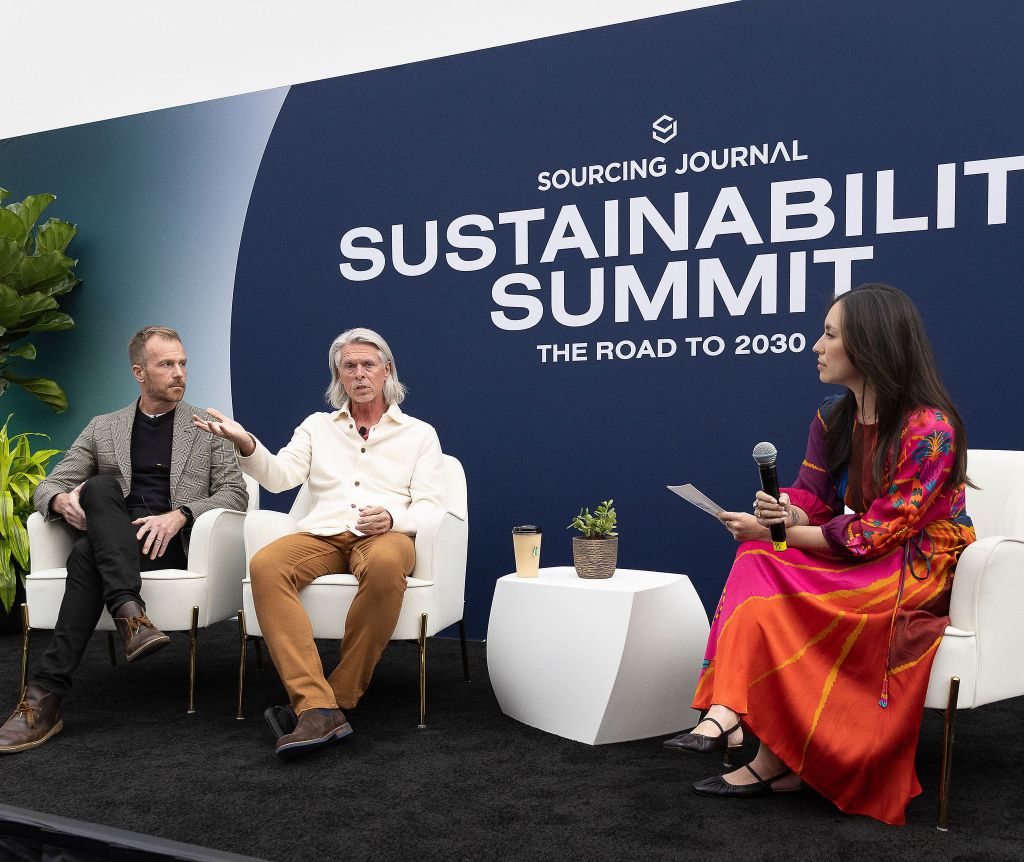Among the key tenets of circularity is keeping products in use for longer. To accomplish this, some brands are looking beyond conventional retail outlets.
Nonprofit is facilitating merchandise’s second lives through social enterprise, finding channels for new and used clothing and shoes that will generate the most value. In a panel at Sourcing Journal’s Sustainability Summit moderated by senior news and features editor Kate Nishimura, executives from Soles4Souls and Kearney broke down the business case for social impact initiatives. “We think about ourselves as a business partner not a charitable partner, because it has to make business sense,” said Buddy Teaster, president and CEO of Soles4Souls.
This year, Soles4Souls will collect 5.5 million pairs of shoes, 4.5 million pieces of clothing and 1 million accessories from a combination of individuals, retailers and brands. Some of these articles will be sold to parties in low-income nations, enabling locals to create businesses and economic opportunity selling them. Others will be donated to those affected by natural disasters, conflict—such as the war in Ukraine—and those in need, such as the homeless. “There is this lane of maybe it’s not good enough for resale, but it’s way before it needs to be recycled, and we can repurpose that and get it into the hands and on the feet of people who really need it,” said Teaster.
Teaster explained that Soles4Souls’ move to sell goods to low-income nations not only provides additional financial support for its charitable work, but also ensures that there is a market for the merchandise. Some regions have been inundated with unwanted secondhand clothing, with the results visible in places such as Chile’s Atacama Desert and . “We believe in markets and capitalism as a way to create opportunity for the end user, the entrepreneur, but it also makes sure that we are providing what people want, so that we’re not dumping things where it’s not needed,” he said.
Consumers often don’t know what to do with used goods. Brand-led donation drives are not only “convenient” for shoppers, but they can also be a win-win for the partner retailers. “The mere act of having a box at a retail location not only provides product that can then go to good use and in a positive way, but it also drives traffic into your stores,” said Brian Ehrig, partner at Kearney.
One of Soles4Souls’ long-term partners on in-store collection has been DSW. Incentivizing participation in the program, DSW gives consumers loyalty points for their donations, and the retailer has collected approximately 7 million shoes over six years. One of the costs for brands of running this type of collection program is logistics, and DSW was paying to ship donations from each of its hundreds of stores to Soles4Souls’ warehouse in Alabama. In a move that halved shipping costs and the associated carbon footprint, Soles4Souls helped the footwear seller leverage the nonprofit’s footprint of five U.S. warehouses to find the most efficient destination.
With Nike in Europe, Soles4Souls is collecting and sorting products, separating what is usable, recyclable and like new but not salable in its current form. For the latter, the nonprofit works with a reconditioning partner to rework goods to allow them to be sold. It has similar programs with Puma and Crocs. “The biggest part of the market is not recycling and not resale,” Teaster said. “It’s this stuff that’s got plenty of life, but it’s hard to get back, especially what’s in the consumers’ hands.”
Getting more life out of fashion also comes down to consumer education about care, Ehrig noted. As an example, he was ready to retire a raincoat that had stopped repelling water, but he learned from a store employee that he just needed to wash the coat to remove skin oils and restore its waterproofing.
Setting products up for secondhand success should begin with design and development, said Ehrig. “Ideally, we would start off with a design intent that we’re going to make products that are made to have multiple owners, we’re going to make products that are made to be repaired,” he said. “And if we make that choice, then we also have to set up a post-purchase supply chain that can then handle all of that type of stuff. But most companies aren’t there yet.”
Beyond filling the gaps in circularity, having this type of social impact story is an internal employee engagement tool. Partner companies have traveled with Soles4Souls as it visits and donates goods to individuals, allowing them to see the results firsthand. “Bringing back these stories of the impact of the things that are really happening on the ground with these shoes and clothes, that is a real benefit,” Teaster noted. “There’s no cost to that, it’s a part of our partnership, but it provides real value back to the organization.”
